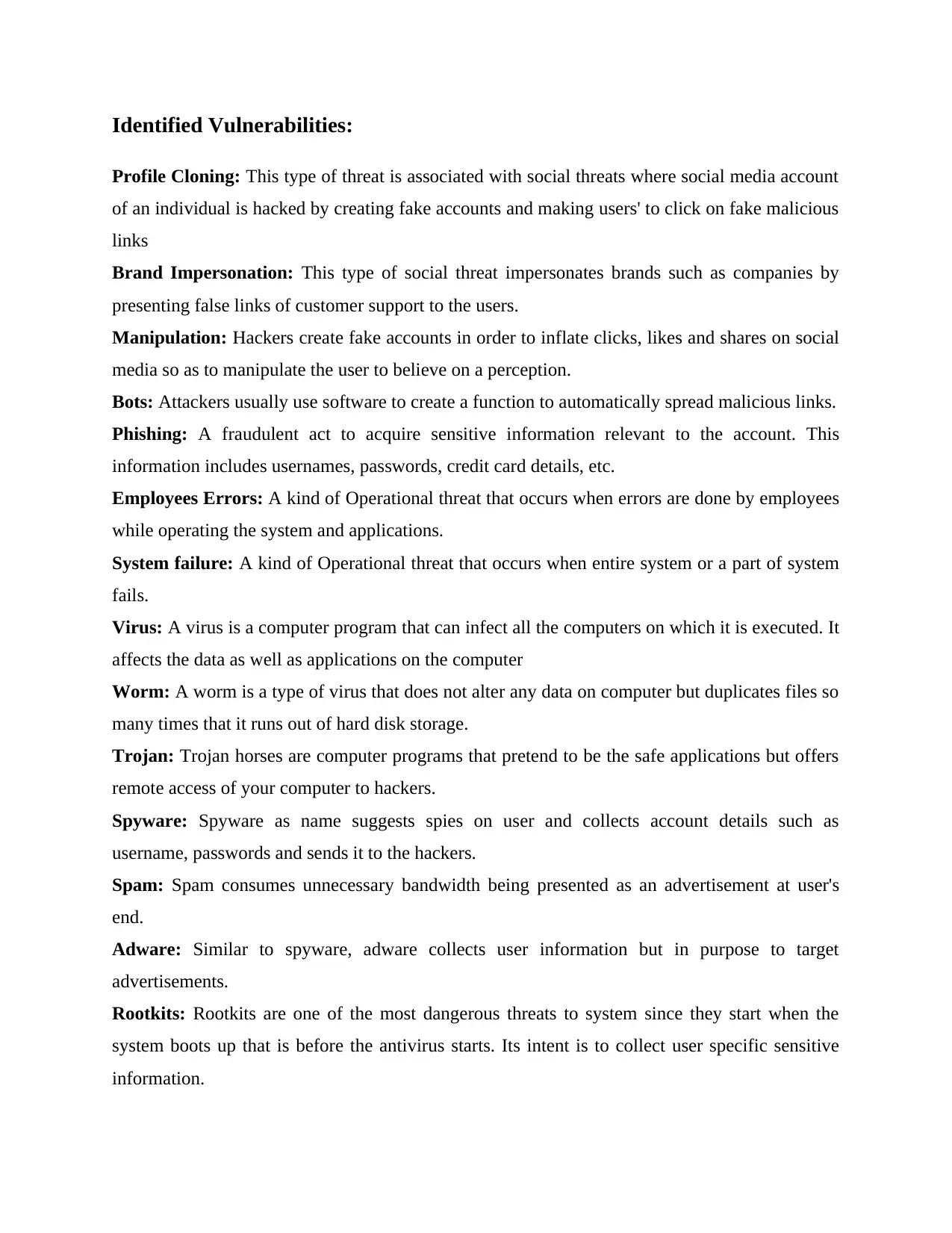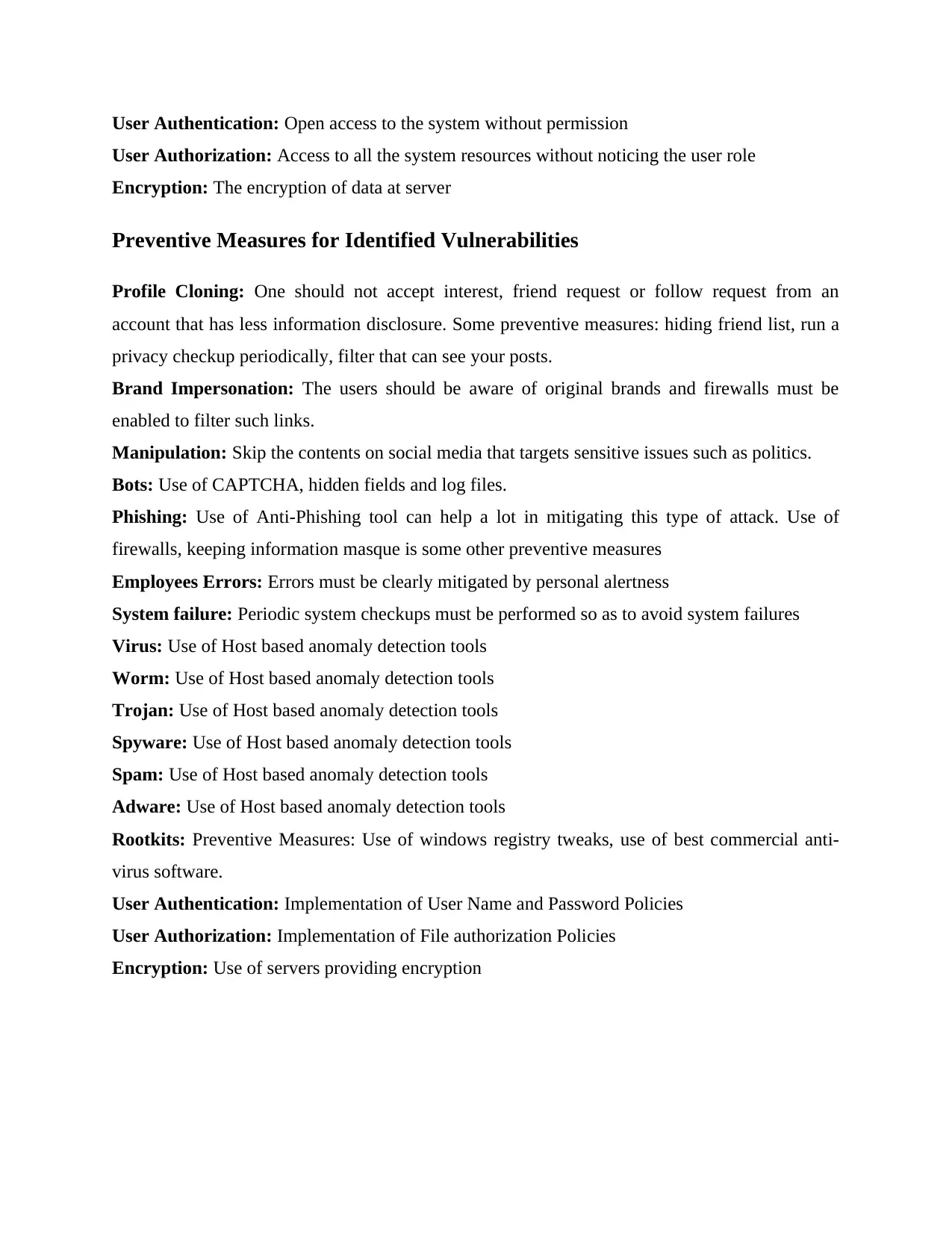Cybersecurity Threats, Vulnerabilities, and Preventive Measures
VerifiedAdded on 2019/09/23
|2
|642
|189
Report
AI Summary
This report identifies and analyzes various cybersecurity threats and vulnerabilities, offering preventive measures and mitigation strategies. The report begins by outlining threats like profile cloning, brand impersonation, manipulation, bots, phishing, employee errors, and system failures. It then discusses the impact of viruses, worms, Trojans, spyware, spam, adware, and rootkits. Additionally, the report addresses the importance of user authentication, authorization, and encryption. For each threat, the report suggests specific preventive measures, such as hiding friend lists, enabling firewalls, using CAPTCHA, implementing anti-phishing tools, and conducting periodic system checkups. The report also emphasizes the use of host-based anomaly detection tools, Windows registry tweaks, and commercial antivirus software to enhance system security. Finally, the report underlines the importance of implementing user name and password policies, file authorization policies, and the use of servers providing encryption to safeguard sensitive information.
1 out of 2








![[object Object]](/_next/static/media/star-bottom.7253800d.svg)